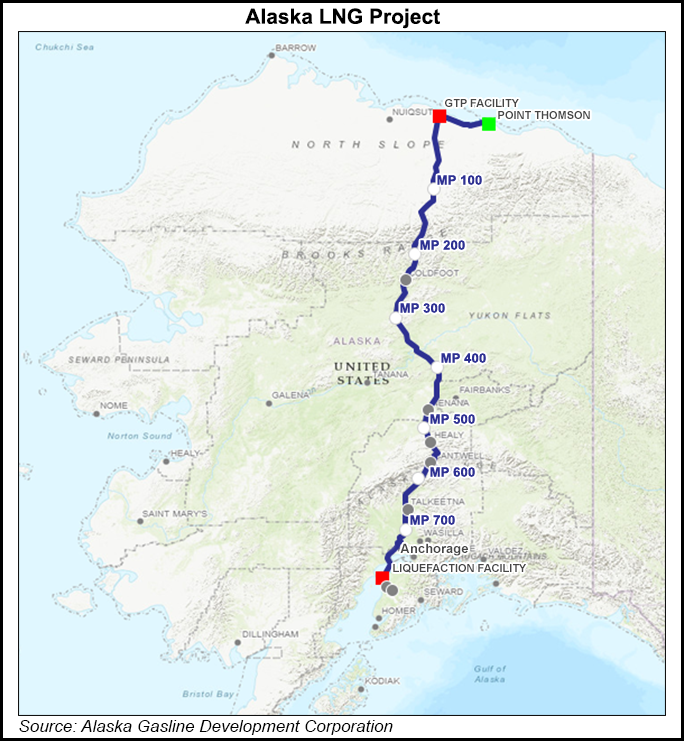Regulatory | Infrastructure | NGI All News Access
Alaska Gasline Asks FERC to Accelerate Environmental Review
The Alaska Gasline Development Corp. (AGDC) has asked FERC to advance the review of its proposed pipeline and natural gas liquefaction project, in part through adopting the findings of an environmental impact statement previously performed for a similar project.

In a letter sent to the Federal Energy Regulatory Commission last week, AGDC asked for “immediate action to progress the environmental review of Alaska LNG in a timely, efficient and cost-effective manner” [CP17-178].
Specifically, AGDC requested that FERC utilize an environmental analysis performed by the U.S. Army Corps of Engineers in connection with the Alaska Stand Alone Pipeline (ASAP) project, “which raised the same wetlands issues currently being reviewed in connection with the Alaska LNG project.”
AGDC also asked FERC to grant any necessary waivers or variances of the Office of Energy Project’s Wetland and Waterbody Construction and Mitigation Procedures issued in May 2013 that impose more restrictive requirements than those imposed on the ASAP project.
AGDC also requested that an environmental review schedule be issued by Dec. 15. The company in its application requested a final order be issued no later than Dec. 31, 2018.
The two projects have been competing to attain full regulatory approval.
The Alaska LNG Project would include a gas treatment plant at Prudhoe Bay, an 800-mile pipeline to Southcentral Alaska with up to five offtakes for in-state use, and a natural gas liquefaction plant in Nikiski to produce liquefied natural gas (LNG) for export. The much smaller ASAP project would include liquefaction and exports.
Earlier this year, AGDC filed its Natural Gas Act Section 3 permit application with FERC. AGDC also filed permit applications with four additional federal agencies: the Pipeline and Hazardous Materials Safety Administration, Army Corps of Engineers, Bureau of Land Management, and National Marine Fisheries Service.
The project would give market access to 35 Tcf of proven gas resources stranded on the North Slope. AGDC, a state of Alaska entity, says the gas pipeline would provide Alaskans with access to natural gas for residential and industrial use. Additionally, the liquefaction plant would be authorized to process 20 million tons/year of LNG for export.
During President Trump’s Asia-Pacific trade mission to China earlier this month, state-owned Sinopec Group, the Bank of China and China Investment Corp. signed a joint development agreement to help Alaska develop the LNG export project. Additional gas-related deals in the region between Alaska, West Virginia and Gulf Coast operators could lead to potentially billions in future investments. AGDC also recently picked up more potential backing for the LNG export project when PetroVietnam Gas signaled its support.
Late last year AGDC took over control of the project from major producers ExxonMobil Corp., BP plc and ConocoPhillips, which said the project had become uneconomic.
© 2024 Natural Gas Intelligence. All rights reserved.
ISSN © 1532-1231 | ISSN © 2577-9877 |
